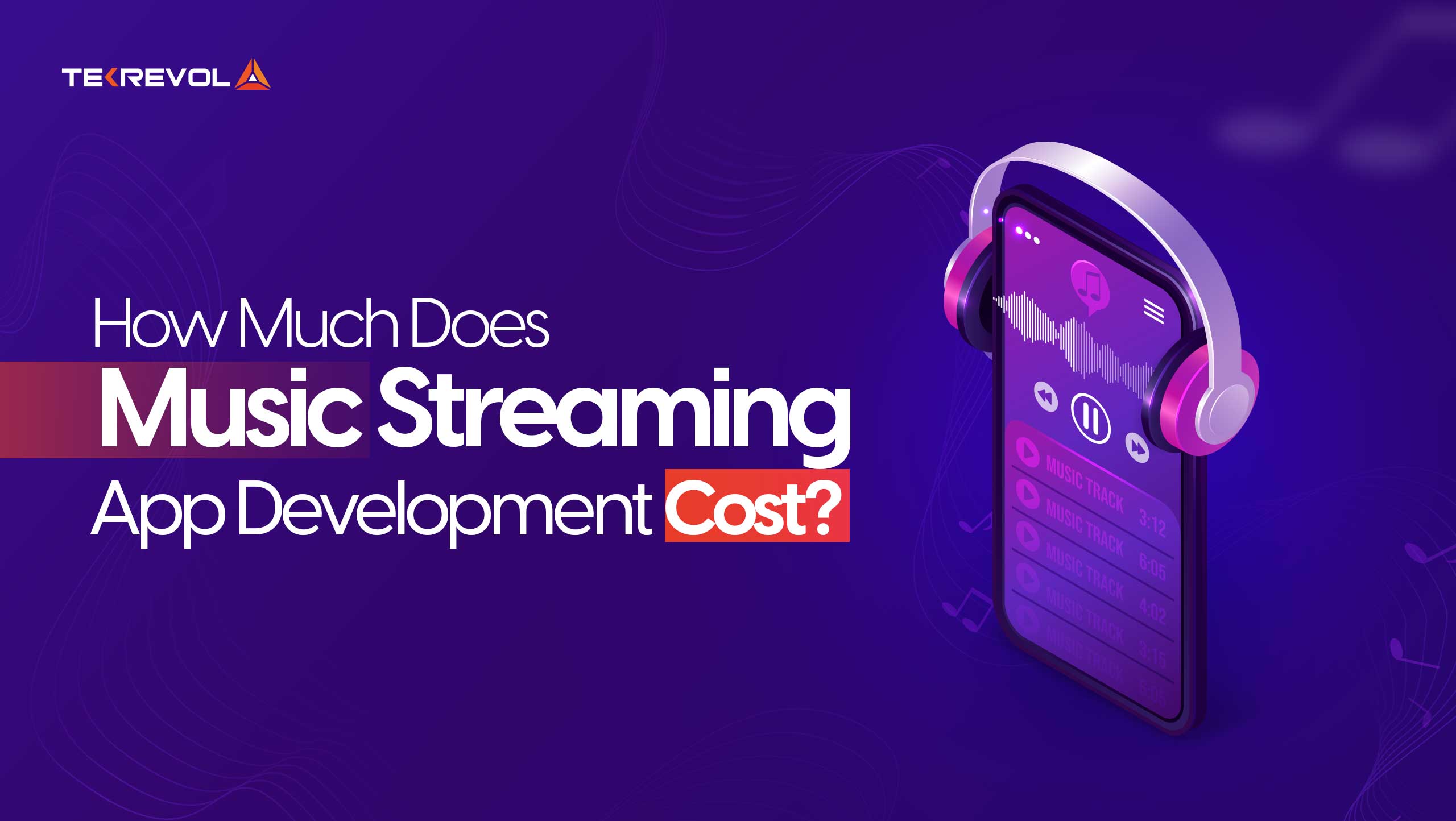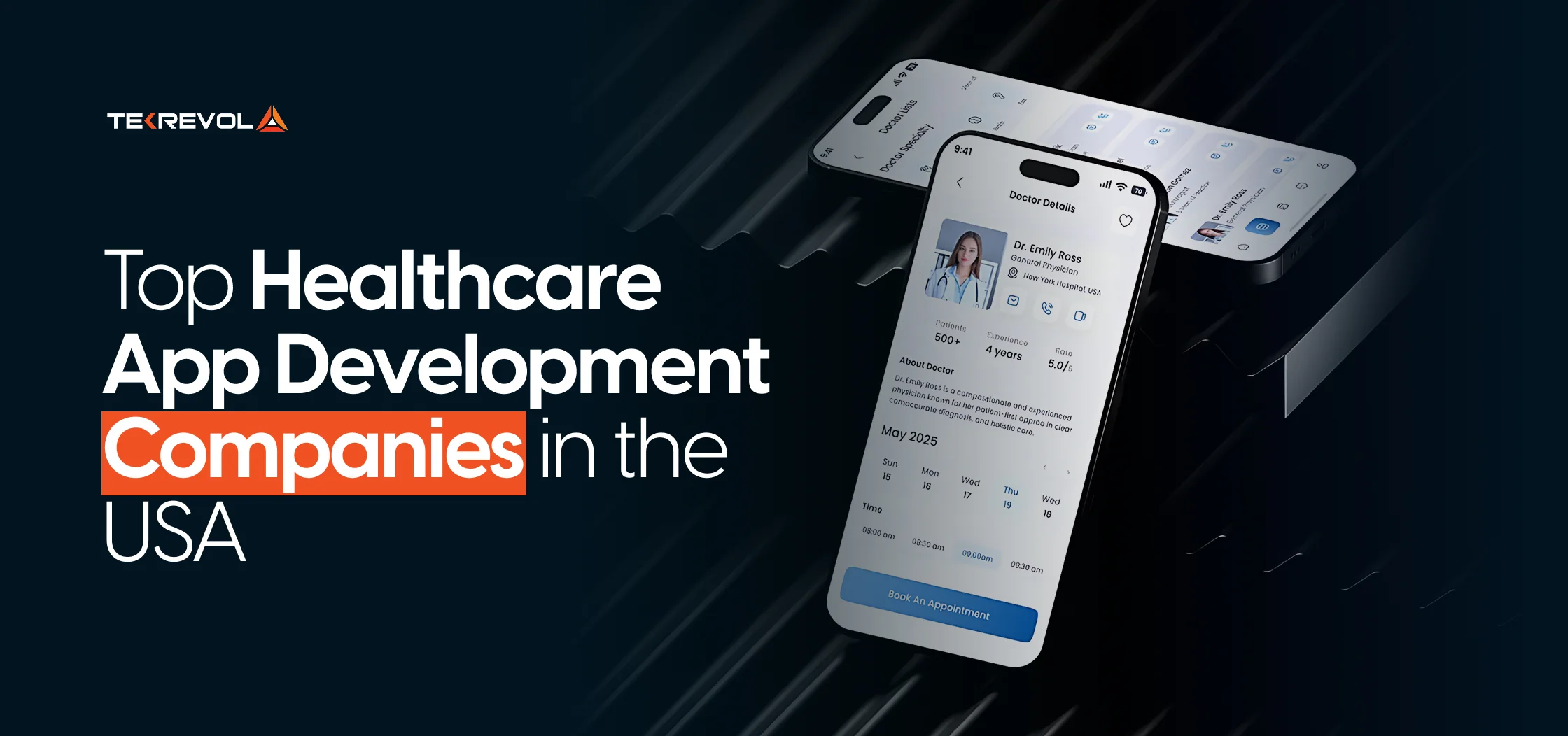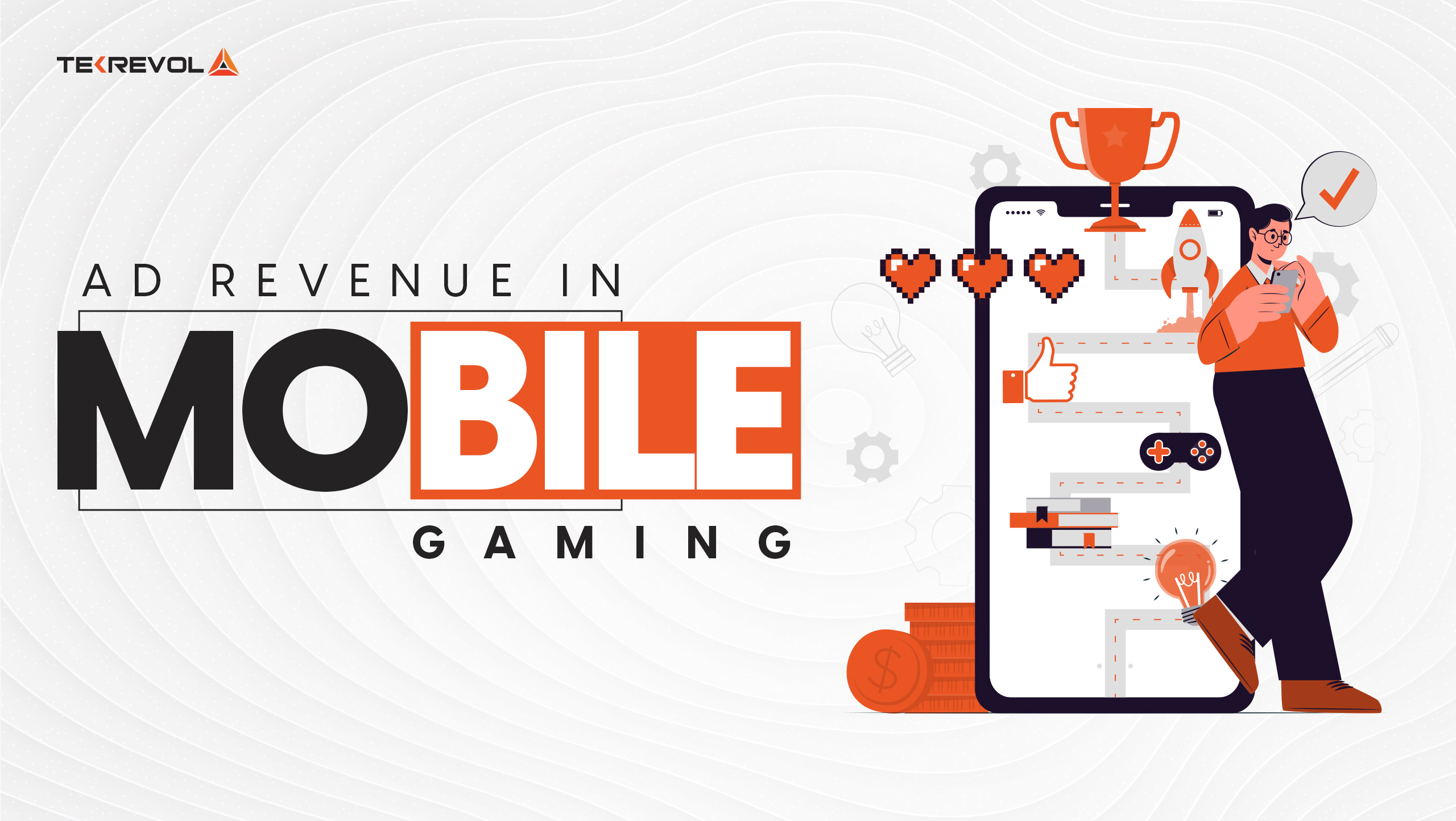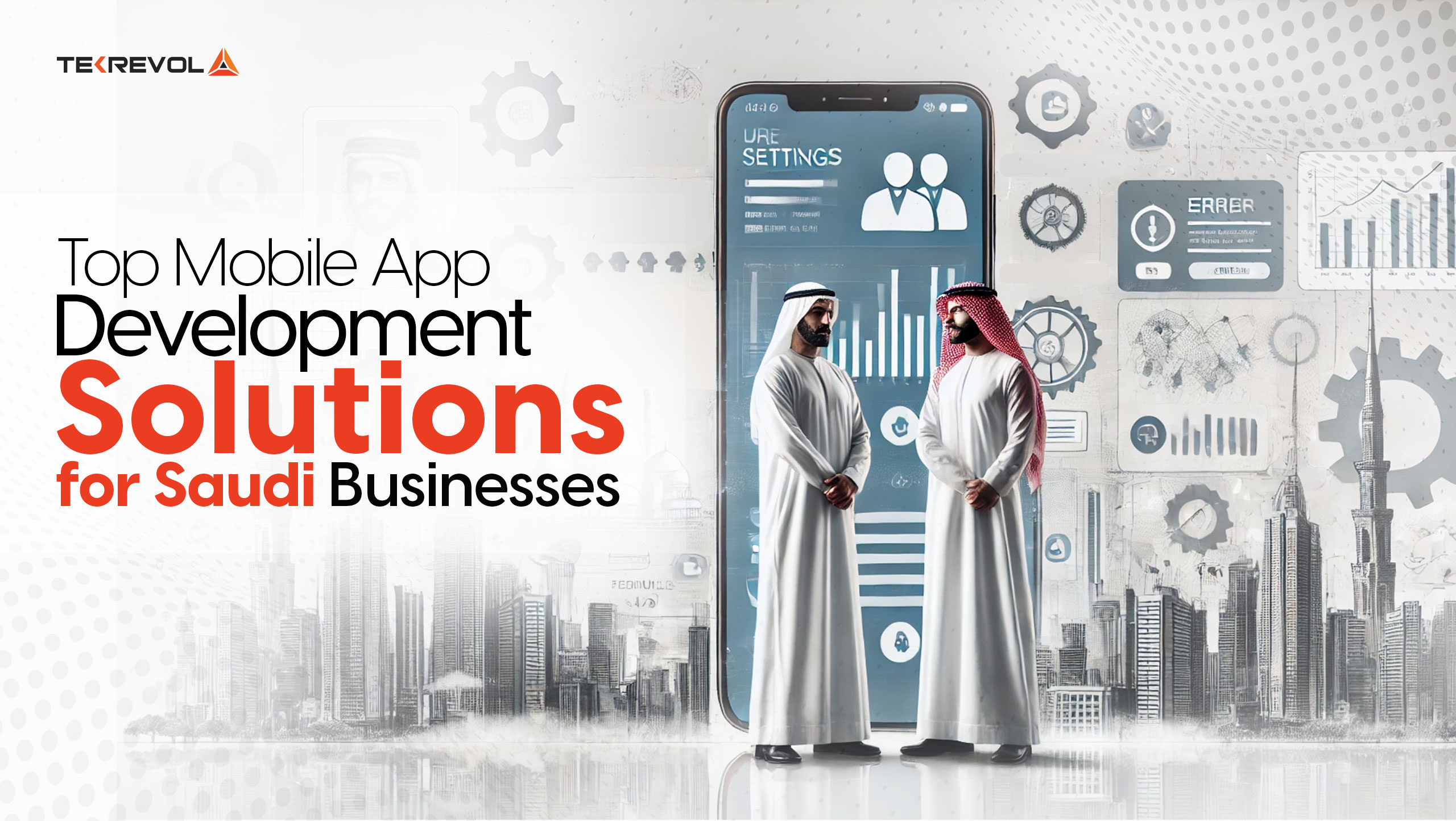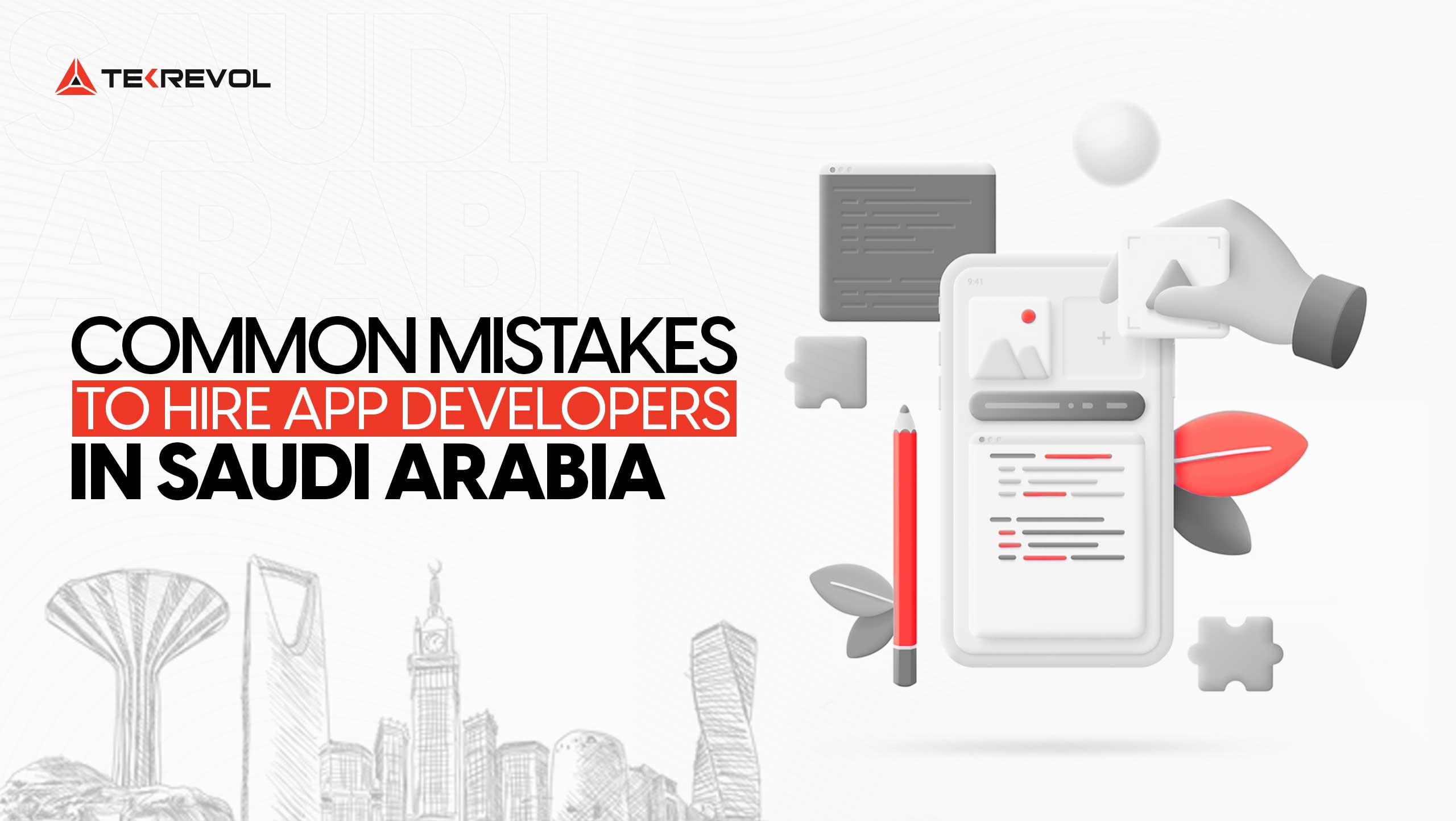If you intend to build your music app from scratch, you’ve probably considered technological difficulties – but what about costs? The average price of developing a music app is $37,500, although the total cost can range between $25,000 and $50,000 or more, depending on the features and complexity of the app.
With the evolution of technology, the pace of music streaming has transformed, leading to the emergence of on-demand music streaming applications.
Spotify’s phenomenal growth has amazed everyone. Since 2006, it has completely transformed the music world. With 600 million users and 236 million paid subscribers, Spotify is a burning example of how a good and smart product can become a source of a thriving business model.
However, businesses are increasingly interested in investing in music streaming app development. If you aim to develop a bespoke music streaming app, this blog will outline the expected costs and the factors influencing them.
- Wondering about the exact cost of building your music streaming app?
- Share your preferences with our team, or use our calculator to get an accurate estimate of your project!
What is a Music Streaming App?
Music streaming applications, available for both mobile and web, enable users to enjoy music on their devices without the need for file downloads. These apps have catalogs containing millions of songs in all sorts of genres, artists, and record labels that are streamed directly over the internet.
In addition to streaming, most of the apps allow their users to create, listen, and share customized playlists, participate with friends, and even have friends contribute to the playlist. The most well-known streaming platforms, such as Spotify, Apple Music, Tidal, Amazon Music, and Google Play Music, offer both free and paid options.
When deciding to invest in a music app development, it’s imperative to assess applicable costs to achieve your goal.
Why Should You Invest in a Music Streaming App? Key Insights
The launch of Spotify in 2008 marked the turning point for music streaming apps, leading to an ongoing surge in user demand and market revenue in the online and offline music streaming sectors.
According to data from Statista, the music streaming app sector is forecasted to grow to $7.36 billion by 2027, representing a CAGR of 6.16% from 2022. In parallel, the user count is set to rise to 161.3 million, with a penetration rate of 46.9%.
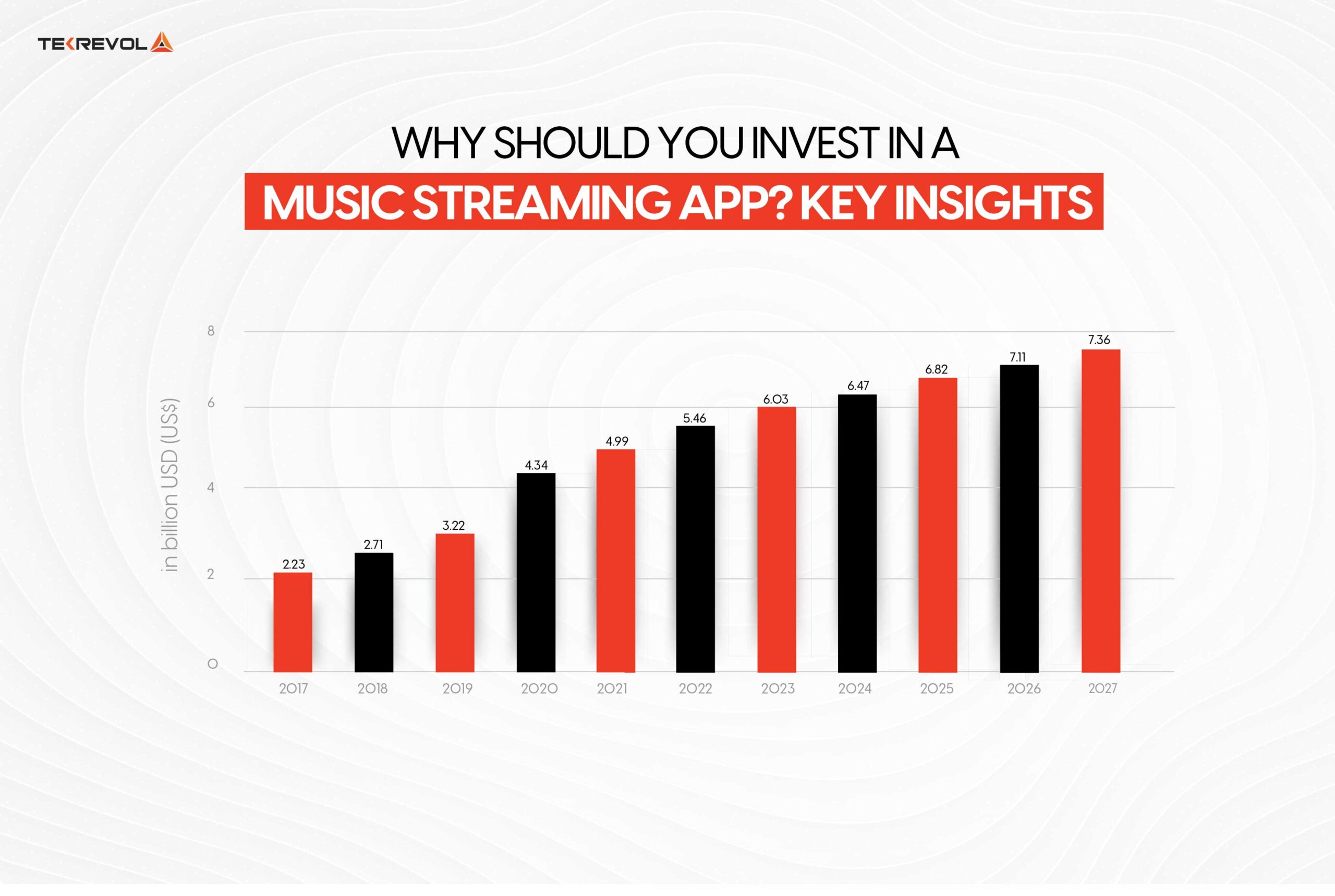
Amazon Inc., Spotify AB, SoundCloud, Pandora Media, and Apple Inc. are among the top companies engaged in the niche music industry.
When the substance of the songs is based on the audience’s interests, the market share increases by around 23%, and consumers’ curiosity is piqued.
As per Statista, the number of music streaming subscribers has skyrocketed in recent years, with around 616.2 million individuals now listening to their favorite artists or discovering new ones via online streaming services.
Types of Music Streaming Applications
Music streaming apps generally fall into three main categories:
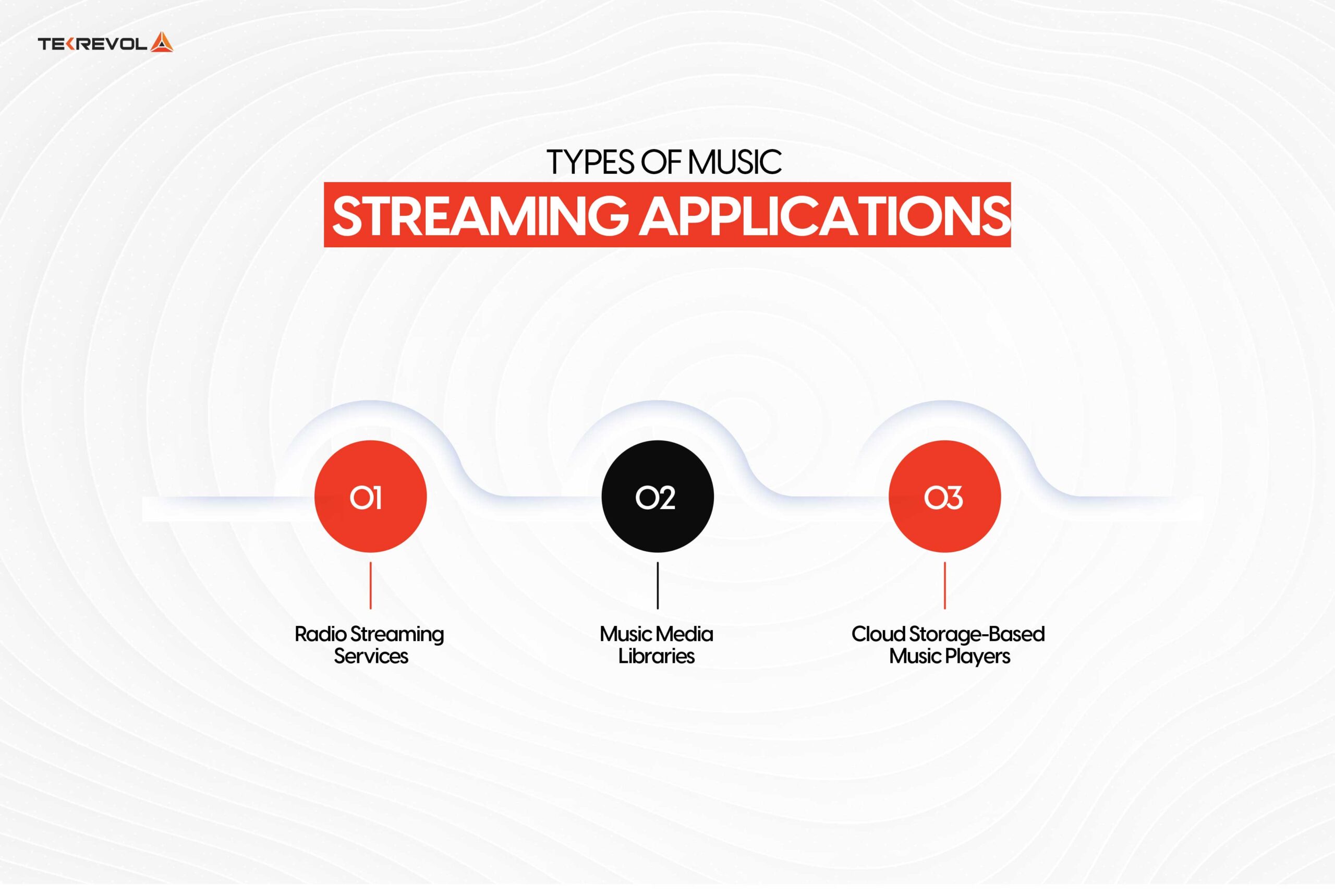
1. Radio Streaming Services
Unlike traditional radio services, radio streaming services allow you to tune in to specific channels or service providers. Most of the time, these platforms include pre-made playlists based on genres, artists, or even sentiments. The most evident difference from traditional radio is the ability for users to select their preferred stations. Most of these apps also allow you to program preset stations, which eliminates the need to tune.
Key Features: Music arranged based on the genre, specific artist stations, listening to songs with little or no interference from users.
Examples: AccuRadio, iHeartRadio, SiriusXM.
2. Music Media Libraries
Music media library apps provide people with the ability to listen to an unlimited number of songs, albums, and artists based on some kind of a monthly or annual fee. Customers subscribe on a monthly or annual basis for unlimited On-Demand access to tracks, and some will allow offline listening too.
However, for most of the services, there is normally a free version, but the number of available songs is few, or there are advertisements. This type of app suits everyone especially if users have the desire to listen to music by category, album, or specific artists and setting up a playlist.
Key Features: The plan includes features such as unlimited music, on-demand streaming, offline listening, and more.
Examples: Spotify, Apple Music, SoundCloud.
3. Cloud Storage-Based Music Players
The concept of music players based on cloud storage enables users to upload and store personal music files on the cloud and play them on devices of their choice. These apps are ideal for users who have their own set of songs and they want a more personalized way of sorting, accessing, and playing media.
It’s worth noting that these apps offer additional features, including personalized playlist creation, music sorting by genre, and offline playback, giving users full control over their music.
Key Features: Playlists, music library, tagging, cloud streaming, offline mode.
Examples: CloudPlayer, pCloud, AudioBox.
Breaking Down the Costs of Developing a Music Streaming App

The cost of creating a music streaming app typically depends on key components, such as the features to be implemented, the platforms for app release, and the tech stack used in development.
Based on the factors above, it is expected that developing new applications for music streaming for both Android and iOS may be between $45, 000 and $25, 0000.
This price can also vary depending on such factors as the functionality, technology to be used, and the total difficulty of the application. Now let’s discuss these factors in more detail below:
App Complexity
The intricacy of your music streaming app determines its cost factor to a large extent. An app with a very large number of features will cost more than the one with minimal features no matter how intricate its design may be. Here’s a quick cost estimate for developing music streaming apps on Android and iOS based on their complexity:
| Music Streaming Apps | Estimated Cost | Time Frame |
|---|---|---|
| Basic Apps | $45,000 to $60,000 | 3 to 6 Months |
| Mid-Level Apps | $70,000 to $100,000 | 6 to 8 months |
| Highly Complex Apps | $100,000 to $250,000 | 9+ months |
UX| UI Design
The UI/UX design is one of the most important considerations concerning your music streaming application because this aspect will define the level of activity of your users together with the rate of retention of users within the App. This means that various factors of the app must be tested and modified several times to offer a decent experience, and this will result in higher costs.
App Platform
Choosing the right platform for your music streaming app development also determines the entire development cost. You will be able to select whether to build for a specific operating system, such as iOS or Android or to pursue cross-platform development.
Although the cost differences between Android and iOS application development are minimal, it is still advantageous to begin with a single platform. It allows you to focus on developing the app and attaining high user retention rates before expanding into additional forms as the app gets more popular.
| Platform | Overview | Estimated Cost |
| Android | Utilizes Java and Kotlin for building apps tailored to Android devices. | $20,000 – $65,000 |
| iOS | Focuses on Swift programming and development with Xcode for iOS apps. | $25,000 – $60,000 |
| Hybrid | Involves frameworks like React Native and Flutter for cross-platform apps. | $15,000 – $30,000 |
Tech Stack
Picking the right technology stack for your mobile app critically determines its success within a rich ecosystem. Adopting modern technologies can help place any business for success while at the same time, achieving the maximum return on investment (ROI).
The majority of popular music streaming apps available on the Android and iOS platforms are built using basic technologies and frameworks that are simple to learn and implement.
Therefore, it is crucial to understand that implementing advanced technologies in your music streaming app would assist in refining performance and UX and introduce features that differentiate it from similar applications.
| Tech Stack | Description | Estimated Cost |
| Backend Development | Involves programming language choices and server-side architecture. | $20,000 – $100,000 |
| Database | Options include MySQL, enterprise DBMS, and real-time databases. | $20,000 – $100,000+ |
| Cloud Services | Services like AWS or Microsoft Azure, with pricing based on usage. | $500 – $5,000 per month |
| Frontend Development | Utilizes technologies like HTML, Swift, or other frameworks, factoring in UI/UX complexity | $20,000 – $100,000+ |
| Streaming Infrastructure | Platforms such as Akamai or Amazon CloudFront, are typically charged on a pay-as-you-go basis. | Varies by usage |
| APIs and Integrations | Costs depend on the APIs chosen for features like music streaming and social sharing | Based on API selection |
| Security and Compliance | Ensures protection with SSL/TLS encryption and other compliance measures. | May incur additional costs |
| Development Tools | Tools like Visual Studio Code or Xcode for app development. | $20,000 – $100,000 |
App Features
The features that you choose to incorporate in your music streaming app will greatly determine how much it will cost you to develop it. While improving the engagement and satisfaction of the user, an application with a rich set of features can give a competitive edge. Before we get into the details of the features you can incorporate into your music streaming app, here’s a summary of the estimated costs:
| App Features | Description | Cost Estimate |
| Basic Features | Includes music playback, user authentication, profile setup, and playlist creation. | $15,000 – $40,000 |
| Enhanced Features | Features like personalized playlists, offline mode, and lyrics display. | $15,000 – $50,000 |
| Advanced Features | Offers live music streaming, user-generated content, and integration with smart devices or wearables. | $30,000 – $65,000 |
Maintenance
App development is not a one-time process, it needs ongoing maintenance to ensure your music-streaming app runs smoothly. This suggests that to meet user expectations and provide features that align with modern technology, regular updates and maintenance are crucial.
The application’s long-term viability depends on the usage of modern technology and integrated features that are relevant to the current market.
Therefore, the maintenance costs in total will determine the general investment costs for the development of your music streaming application. A well-maintained app guarantees a superb experience and a top-notch application that will attract and retain users.
Third-Party Integrations
Using third-party services on your music streaming application can be useful to boost the application’s performance and valuation of users. Some of these could be payment gateway services, social media sharing options, analytical tools, and music licensing services. Although they are valuable, they also contribute to the overall expense of development.
When budgeting, it’s imperative to acknowledge both one-time and recurring charges associated with these integrations before you begin the process. Effective integration of third-party services can increase your app’s competitive edge and improve users’ experiences in general.
Team Size and Outsourcing
Another factor that can influence the overall price of your music streaming app is the size of the development team hired for the project. Having an in-house team is quite complicated and costly since one has to source and coordinate every individual in the team. However, it is cheaper and more efficient if the project is outsourced to an app development company familiar with the business.
Outsourcing offers you exclusively dedicated music app developers that you do not have to ‘deal with,’ and is normally less costly than building up a human resource in-house. When designing an Android or iOS app, this technique helps you find the right talent and makes better use of your budget.
Top Features to Consider for Your Music Streaming App
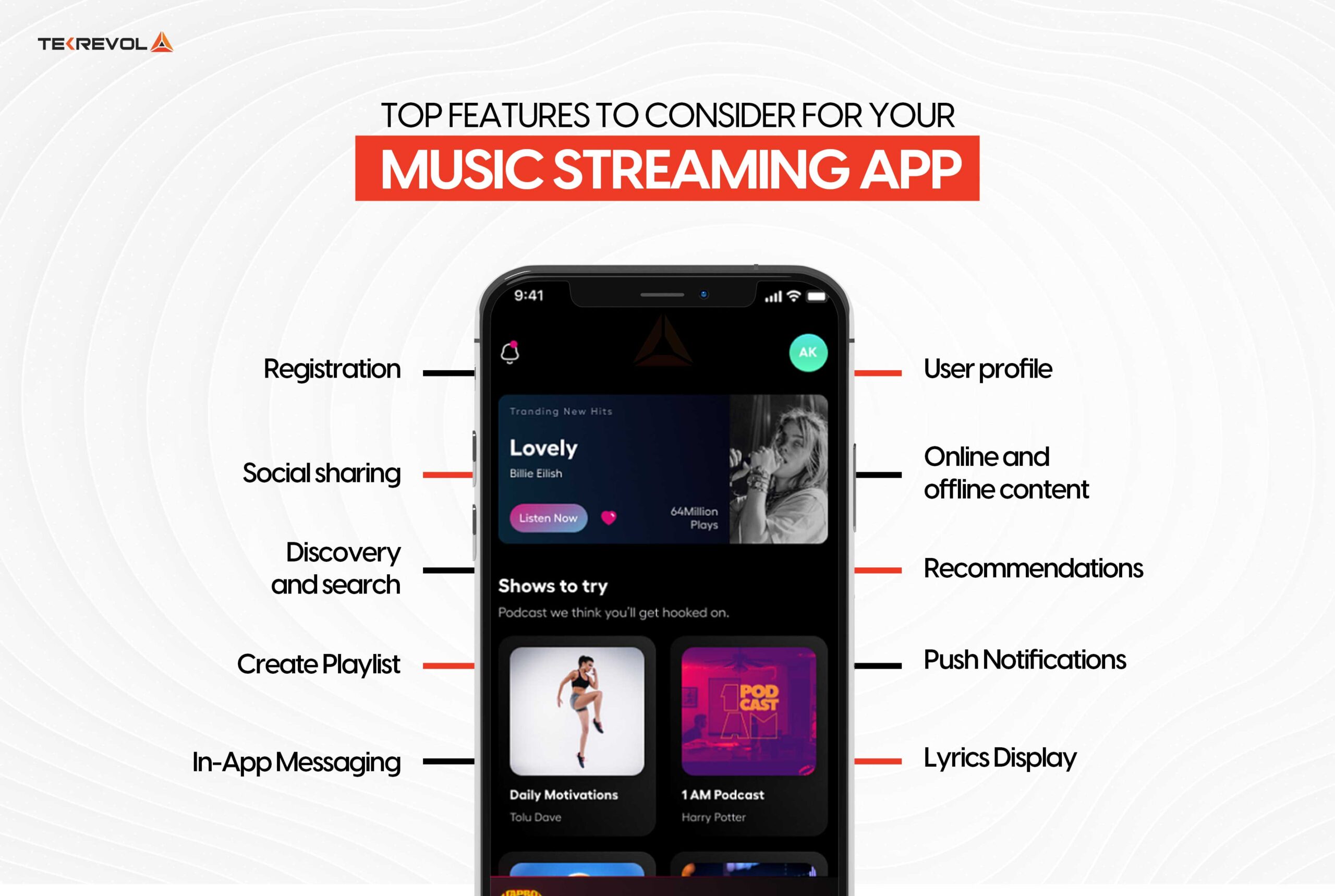
When it comes to investment in an application that would allow users to stream music, features are the elements that not only improve the application’s usability but also are closely intertwined with the cost of development.
Selecting what can be incorporated can be a daunting task, especially if it is in the early stage of producing the app, and that’s why reaching out to a reliable music streaming app development company can be effective. Here’s a breakdown of essential features that every music streaming app should offer:
Registration
The registration feature is implemented based on the app’s business strategy. Although some sites do not require users to register, the majority of music streaming apps use the freemium model. Registration is crucial in this business because of high-value consumers, particularly premium ones.
To create an account, users need to fill in their selected username, email address, and phone number during the sign-up process. It not only provides them with a vast collection of music to listen to but also some additional features available only to the registered members.
User Profile
The user profile feature enables users to control and customize their information using the application enumerate to include basic details like a user’s name, email address, or other user-related attributes.
Apart from general settings, it allows users to choose the most liked genres, artists, or playlists for further app activity. Such preferences not only enhance their experience but also enable the app to provide recommendations for the user.
Social Sharing
Sharing features is one of the best ways of marketing your music streaming application and increasing the chances of people downloading it. It enables users to share their favorite songs, playlists, and artists on social media platforms like WhatsApp, Instagram, and Facebook.
This capability is a large and effective word-of-mouth promotion factor that increases the app’s user base through personal referrals. It is a worthwhile investment that encourages users to interact with your program and share it with others.
Online and Offline Content
For an even richer experience, it’s vital to consider both online and offline content. With online content, users can stay updated with the latest music, playlists, and releases in real-time.
However, having offline content is crucial for maintaining user engagement, as it permits listeners to download tracks and playlists to enjoy without needing an internet connection. This feature is very handy for extended use, as it allows users to listen to endless amounts of music without interruption.
Discovery and Search
The discovery and search feature is one of the most important components in any of the music streaming applications. It provides the opportunity to search for particular songs, artists, or albums and to find other songs that match the selected criteria.
By providing detailed and sophisticated options for filtering and recommending options this feature enables users to find what they are seeking.
Recommendations
One of the most effective ways to engage consumers is to offer individualized recommendations. This feature uses numerous attributes of the user, such as stations, artists, or specific songs the user likes, to recommend new music with the same style, type, and tendencies.
With the use of updated algorithms, applications may propose the type of music that would be acceptable to the user, keeping them interested and engaged with the program.
Create Playlist
The ability to create and modify playlists is a crucial feature of any online or offline music app as it allows the user to customize the selection of songs based on the occasion, such as a workout, a party, or time to relax. Users will check the app more frequently to access their favorite music if their favorite tunes are included in playlists. This increases user engagement.
Push Notifications
If you want to get your users to stick to your application then there is no better way than implementing push notifications. They can inform users about new songs, music offers, promotions, deals that might be of interest to them or even songs they might have liked before. Though It is not always necessary, in-app push notifications can significantly improve your user’s retention rate and keep them updated.
Since customizing smart push notifications requires backend modifications, it should be noted that this functionality may raise development costs. When utilized properly, they provide an effective marketing avenue that keeps users interested in the software.
In-App Messaging
Direct messaging enables people to interact in the app, so it goes beyond being merely an audio streaming application. It is possible to exchange messages with other users, share songs, or create playlists together. This feature is useful for creating a community around your app and giving the users more incentives to return to the app as often as possible.
Lyrics Display
One of the best methods to increase user engagement with your music streaming app is to add a lyrics display. Users can interactively experience the songs by seeing the words displayed in real-time while the music is playing.
This trait enhances the listeners’ comprehension of the music while making it easier for them to relate to the words being sung. AI is particularly useful when it comes to organizing and synchronizing lyrics with music, which enhances the service’s usefulness even more.
- Ready to launch your music-streaming app with a customized feature list?
- Let’s collaborate and get your app live in no time!
How to Generate Income from Music Streaming Apps
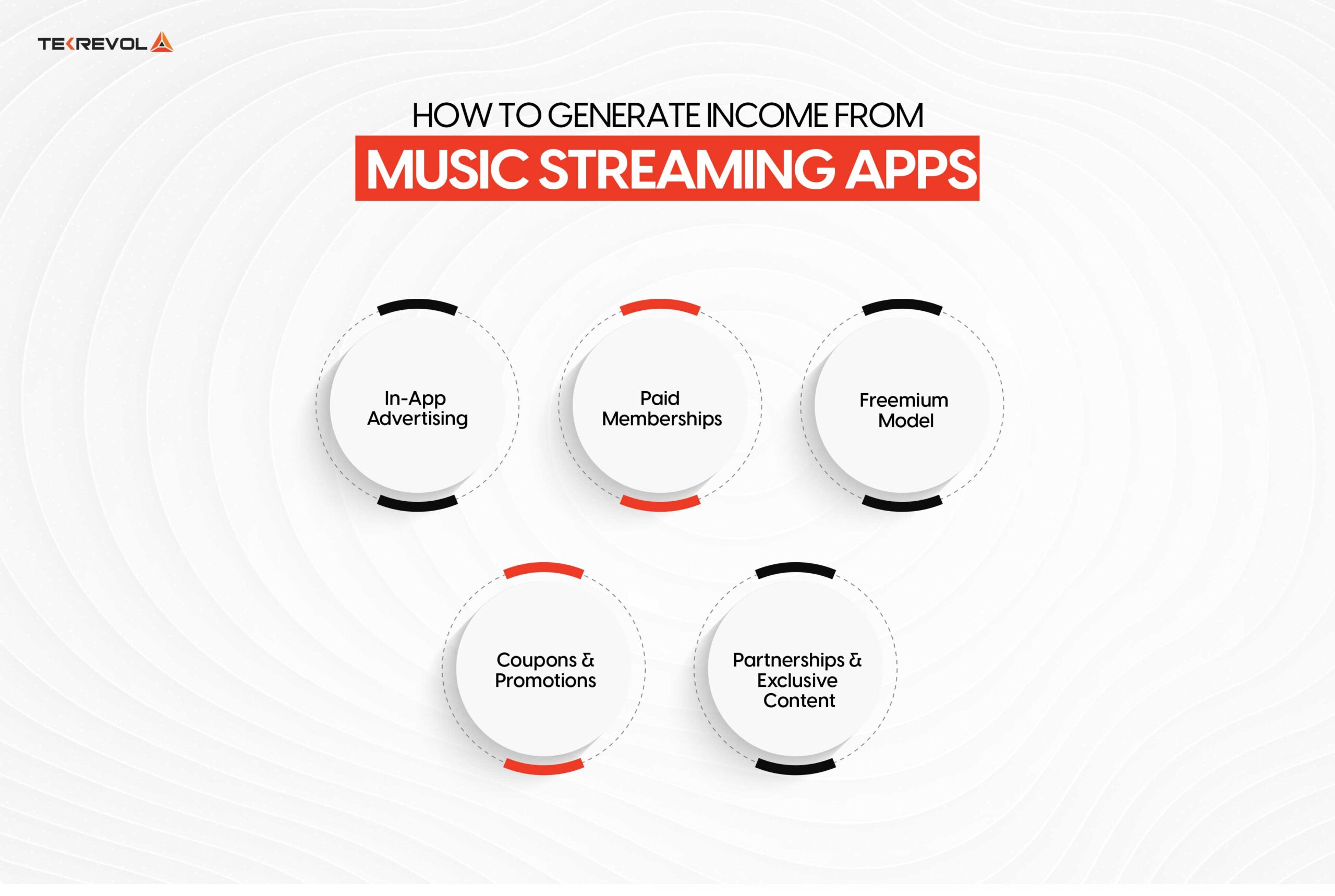
If you want your music streaming app to churn out substantial amounts of revenue, you need to have a strong business model acting as the structure within which your app exists, and the amount of revenue generated should align with your users’ expectations.
Even if you have the best app idea, generating the necessary revenue can be challenging, especially without a clear revenue model. Here’s how you can create multiple revenue streams to maximize your return on investment (ROI) and sustain your business:
In-App Advertising
Using advertising to generate revenue is a viable technique for your music streaming service. Ads in picture or video format can also be played when switching tracks or songs. One of the most consistent sources of income is the ability to publish adverts for businesses that are interested. However, encouraging users to allow customized ads to target their preferences might also result in more ad revenue.
Paid Memberships
Implementing a paid service option lets you receive regular contributions from consumers. One can subscribe either monthly or yearly to the application and acquire additional features or remove ads. This strategy will also help in maintaining the users to come and use the app and at the same time, have a steady stream of income from these loyal customers willing to pay for a premium app.
Freemium Model
If your app is free, the freemium model of app monetization can be useful. It allows users to download the app and use its basic features for free.
However, to utilize extra features such as offline mode, ad-free listening, or better sound quality, they must pay. It also gives the customer a sample of the app before they pay for a premium plan, highlighting why it is a popular alternative for raising income.
Coupons and Promotions
Seasonal advertising, as well as implementing a discount and promotion policy, could help to boost the number of users at specified periods. Users may be given special, unique codes to enter when subscribing, as well as special deals for a specific subscription on holidays or other occasions.
Apart from assisting in increasing subscription rates, these timely offers can also help to retain customers on your app in the long run.
Partnerships and Exclusive Content
Another method of monetization is working with artists or businesses to develop unique content or release exclusive music tracks before others. While users may be ready to consume user-generated material for free, it would be more rewarding to pay a higher fee for access to your exclusive songs, albums, or playlists, resulting in increased app engagement and income.
- Dreaming of a cutting-edge music streaming app that stands out from the crowd?
- We help you bring your vision to life with our expert app development services!
Popular Music Apps and Their Development Costs
If you’re thinking about establishing a music streaming app like Spotify, you need to understand how other platforms determine their development costs. Analyzing the development ranges of branded apps such as Spotify, SoundCloud, Pandora, YouTube Music, and Apple Music will provide you with a realistic estimate of what to expect while developing your application.
Spotify
Spotify is one of the best music streaming applications out there that are available for use and is widely known for hosting an interface that is appealing to the eye as well as a good interaction interface.
The development cost of an app like Spotify encompasses various elements, including front-end development, back-end infrastructure, and additional features for premium users. Generally, the development of an app with such functionality as Spotify costs between $100,000 and $500,000 or more depending on the functionality and scalability of the app.
SoundCloud
SoundCloud is among the more complex applications, as its core concept derives from a social platform where users are encouraged to share audio on the web. This application’s interface is straightforward, and its back end is highly scalable to handle millions of user’s uploading and streaming.
Creating a music app similar to SoundCloud would cost between $60, 000 and $80, 000 for basic functionalities, however with designs and backend, $50, 000 to $300, 000. The mere design could demand anything from $10, 000 to $25, 000.
Pandora
Ad-supported audio streaming Pandora, a part of SiriusXM, dominates the United States market. The app has sophisticated functions like synced-playlist and ads, which makes this musical platform unique.
Generally, the creation of an application similar to Pandora takes about $50,000 to $300,000. Several factors that affect this range comprise license fees, quality assurance and testing, marketing, and promotions, all of which will go to the development cost of the product.
YouTube Music
YouTube Music, another music streaming service, is closely linked to YouTube in terms of sharing, as well as utilizing its features. As a product of Google, it offers an improved feature set and a large variety of songs to attract consumers.
The cost to create an app that is similar to YouTube Music can cost anything between $70, 000 and $500,000, depending on the features that are incorporated in the app and the reliability of the app.
Apple Music
Apple Music is one of the most prominent music streaming platforms across the world with a status of streaming over 100 million songs. The complexity of the database, server systems, and architecture leads to higher development costs, along with the expected need for more expansion.
Creating an app like Apple Music anywhere from $100,000 to $500,000 or more is vital. It is within this range that Apple provides its subscribers with complex backing, cross-device compatibility, and additional enhanced services.
Wrapping Up
We have listed the real and hidden expenses, as well as the elements that influence the creation of music streaming apps, for your consideration. It is critical to have a good plan in place that will assist you in improving the procedures involved in app development and ensuring that you are prepared to compete in the streaming industry.
However, if you’re serious about developing a music streaming app, now is the time to work with a professional mobile app development company. They will help you introduce many new technologies to build and develop a robust, easy-to-use App based on your business needs.
How TekRevol can help you with Music App Development?
TekRevol can assist you with developing a music application from scratch or improving an existing one by designing new interfaces, integrating functionality, and leveraging AI technology. Our music app developers recognize the importance of having a single application that works across both iOS and Android devices. With our skills and knowledge, your music app will deliver a smooth experience and engage a large number of users.
In addition to development, TekRevol provides scalability, security, and post-launch assistance. We prepare your software for increased user loads, new functional modules like live streaming and blockchain, and data protection legislation. Using our talents, we can make the mobile application more powerful, safe, and captivating, as well as optimize it for lifespan.
- Want to stand out in the competitive music app market?
- Our music app developers are ready to turn your vision into a reality.

